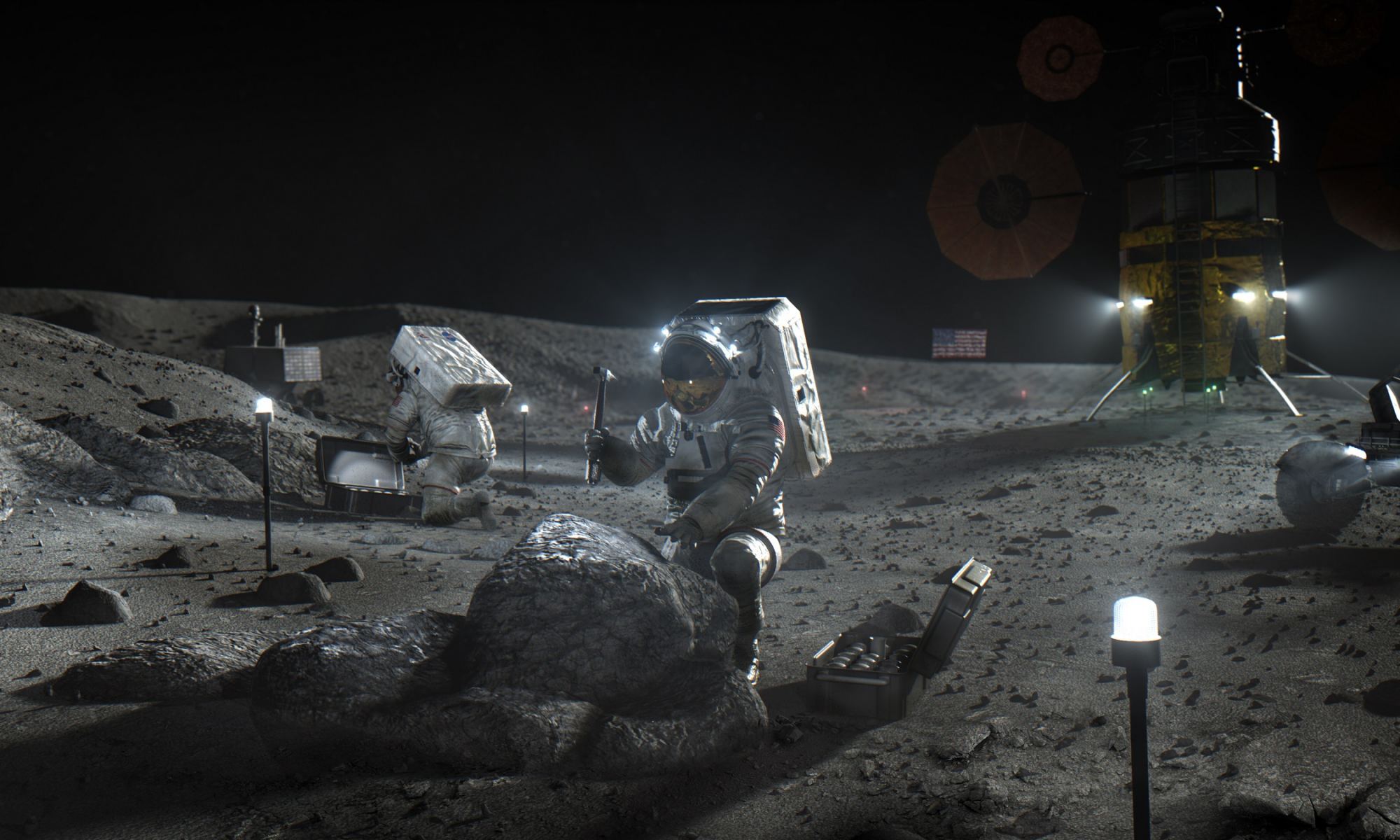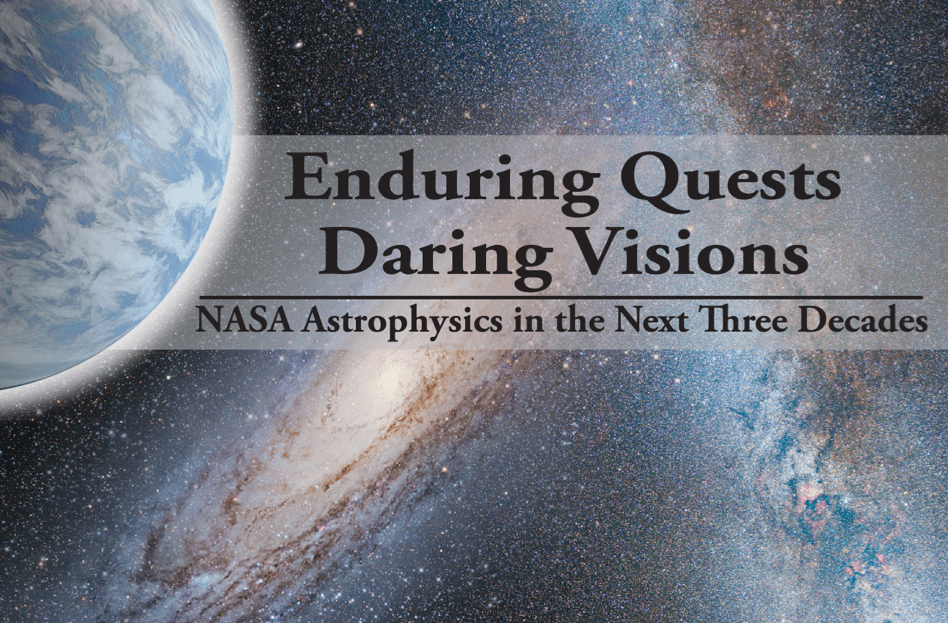Space flight is an expensive business and that money has to come from somewhere. The White House has just released their budget for fiscal year 2025. What does that mean for NASA?, they will get $25.4 billion, the same as it received last year but $2 billion less than it requested. NASA Administrator Bill Nelson said the constraints come from a debt ceiling agreement that limits non-defence spending. Alas the $2 billion deficit means NASA will need to cut costs from various missions.
Continue reading “NASA Announces its 2025 Budget. Lean Times Ahead.”Will We Ever Go Back to Explore the Ice Giants? Yes, If We Keep the Missions Simple and Affordable
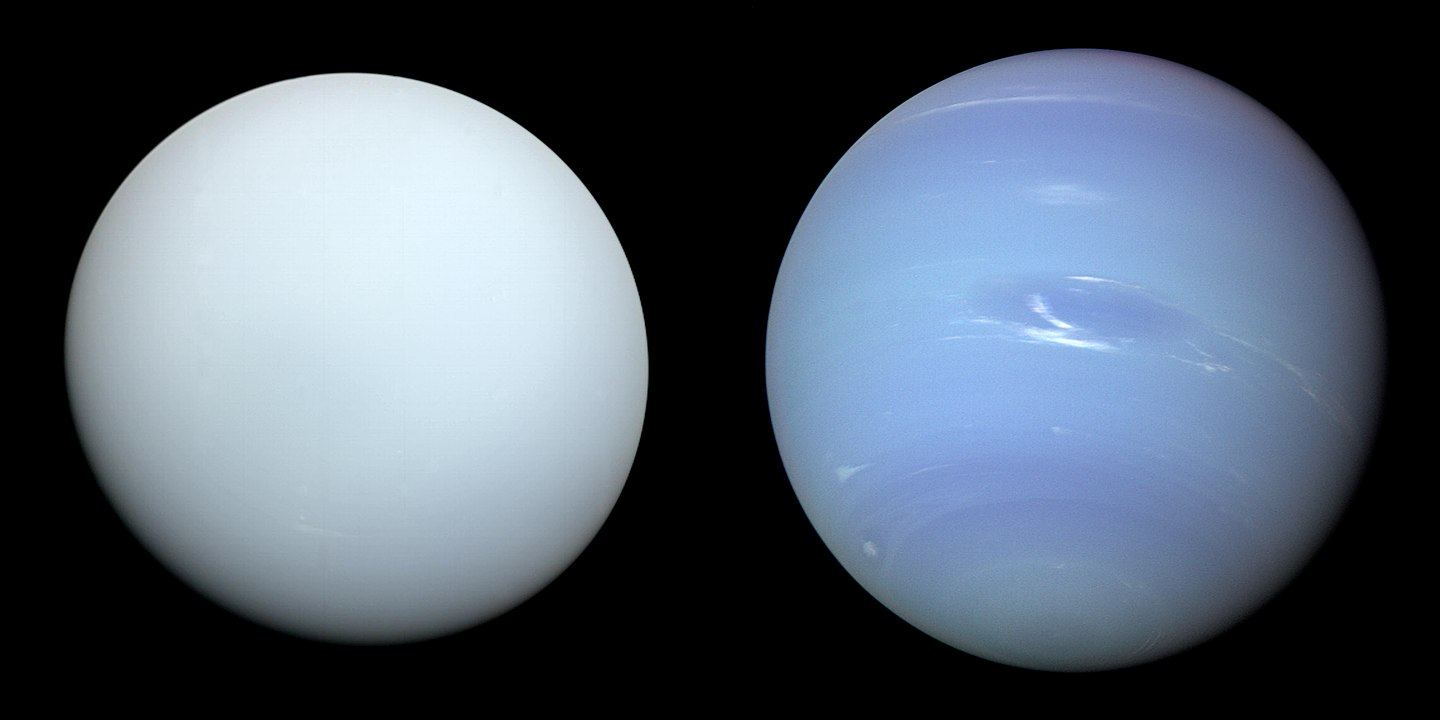
It’s been over 35 years since a spacecraft visited Uranus and Neptune. That was Voyager 2, and it only did flybys. Will we ever go back? There are discoveries waiting to be made on these fascinating ice giants and their moons.
But complex missions to Mars and the Moon are eating up budgets and shoving other endeavours aside.
A new paper shows how we can send spacecraft to Uranus and Neptune cheaply and quickly without cutting into Martian and Lunar missions.
Continue reading “Will We Ever Go Back to Explore the Ice Giants? Yes, If We Keep the Missions Simple and Affordable”Biden Administration is Looking for a 6.3% Increase in NASA’s Budget for 2022
Space research, like much else in capitalist societies, is driven by funding. The biggest source of that funding for that space research is usually the US government. Which is why, when US presidents release their budget proposals, the space community takes notice. Especially because that budget affects NASA, the largest space funding agency in the world. With a new year and new administration comes a new budget and with the 2021 proposed budget comes a nice funding increase for NASA.
Continue reading “Biden Administration is Looking for a 6.3% Increase in NASA’s Budget for 2022”NASA’s New Budget for Artemis? $28 Billion
It’s no exaggeration to say that NASA’s plans to return astronauts to the Moon has faced its share of challenges. From its inception, Project Artemis has set some ambitious goals, up to and including placing “the first woman and next man” on the Moon by 2024. Aside from all the technical challenges that this entails, there’s also the question of budgets. As the Apollo Era taught us, reaching the moon in a few years doesn’t come cheap!
Funding is an especially sticky issue right now because of the fact that we’re in an election year and NASA may be dealing with a new administration come Jan of 2021. In response, NASA announced a budget last week (Mon. Sept 21st) that put a price tag on returning astronauts to the Moon. According to NASA, it will cost taxpayers $28 billion between 2021 and 2025 to make sure Project Artemis’ meets its deadline of 2024.
Continue reading “NASA’s New Budget for Artemis? $28 Billion”KSC Director/Shuttle Commander Robert Cabana Talks NASA 2018 Budget- ‘Stay on the path’ with SLS, Orion, Commercial Crew: One-on-One Interview


KENNEDY SPACE CENTER VISITOR COMPLEX, FL – Following up last week’s announcement of NASA’s proposed Fiscal Year 2018 top line budget of $19.1 Billion by the Trump Administration, Universe Today spoke to NASA’ s Kennedy Space Center (KSC) Director Robert Cabana to get his perspective on the new budget and what it means for NASA and KSC; “Stay on the path!” – with SLS, Orion, ISS and Commercial Crew was his message in a nutshell.
The highlights of NASA’s $19.1 Billion FY 2018 budget request were outlined last week by NASA Acting Administrator Robert Lightfoot during a ‘State of NASA’ speech to agency employees held at NASA HQ, Washington, D.C. and broadcast to the public live on NASA TV on May 23.
In order to get a better idea of the implications of the 2018 NASA budget proposal for KSC, I spoke one-on-one with Robert Cabana – one of NASA’s top officials, who currently serves as Director of the Kennedy Space Center (KSC) as well as being a former astronaut and Space Shuttle Commander. Cabana is a veteran of four space shuttle missions.
How did NASA and KSC fare with the newly announced 2018 Budget?
“We at KSC and NASA as a whole did very well with the 2018 budget,” KSC Director Robert Cabana explained during an interview with Universe Today by the Rocket Garden at the Kennedy Space Center Visitor Complex (KSCVC) in Florida.
“I think it really solidifies that the President has confidence in us, on the path that we are on,” Cabana noted while attending a student robotics competition at KSCVC sponsored by NASA.
“With only a 1 percent cut – when you look at what other agency’s got cut – this budget allows us to stay on the path that we are on.”
Trump cut NASA’s 2018 budget request by $0.5 Billion compared to the recently enacted FY 2017 budget of $19.6 Billion approved by the US Congress and signed by the President.
Other Federal science agency’s also critically vital to the health of US scientific research such as the NIH, the NSF, the EPA, DOE and NIST suffered terrible double digit slashes of 10 to 20% or more.
KSC is the focal point for NASA’s human spaceflight programs currently under intense development by NASA – namely the Space Launch System (SLS) Mars megarocket, the Orion deep space crew capsule to be launched beyond Earth orbit (BEO) atop SLS, and the duo of Commercial Crew Program (CCP) space taxis being manufactured by Boeing and SpaceX that will ferry our astronauts to low Earth orbit (LEO) and the International Space Station (ISS).
Numerous NASA science missions also launch from the Florida Space Coast.
“At KSC the budget keeps us on a path that continues to provide a commercial crew vehicle to fly crews to the ISS in 2018,” Cabana stated.
“The budget also keeps us on track to launch SLS and Orion in 2019.”
“I think that’s really important – along with all the other stuff we are doing here at KSC.”
“From our point of view it’s a good budget. We need to press ahead and continue on with what we promised.”
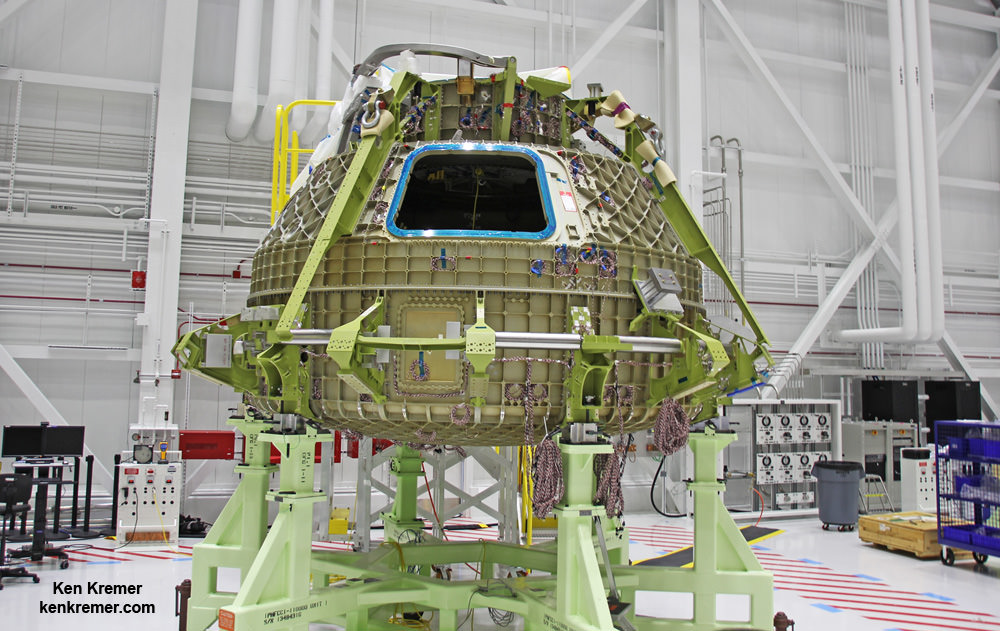
What’s ahead for commercial crew at KSC?
“We are moving forward with commercial crew,” Cabana told me.
“Within the next calendar year [2018] we are moving ahead with flying the first certification flight with crew to the ISS. So that’s test flights and by the end of the year an actual crewed flight to the ISS. I want to see that happen.”

Industry partners Boeing and SpaceX are building the private CST-100 Starliner and Crew Dragon spaceships respectively, as part of NASA’s commercial crew initiative aimed at restoring America’s human spaceflight capability to launch our astronauts aboard American spaceships on American rockets from American soil.
Commercial Crew is a public/private partnership initiative with commercial contracts valued at $4.2 Billion and signed by Boeing and SpaceX with NASA in September 2014 under the Obama Administration.
The goal of commercial crew is to end our sole reliance on the Russian Soyuz capsule for astronaut flights to the space station since the retirement of the space shuttles back in 2011 – by manufacturing indigenous rockets and human rated spaceships.
However the CCP program suffered severe budget reductions by the US Congress for several years which forced significant work stretch-outs and delays in the maiden crew launches by both companies from 2015 to 2018 – and thus forced additional payments to the Russians for Soyuz seat purchases.
Both the Boeing Starliner and SpaceX Dragon crew vehicles can carry 4 or more astronauts to the ISS. This will enable NASA to add another crew member and thereby enlarge the ISS crew from 6 to 7 permanent residents after they become operational.

Meanwhile NASA is focusing on developing the SLS heavy lift rocket and Orion crew capsule with prime contractors Boeing and Lockheed Martin in an agency wide effort to send humans on a ‘Journey to Mars’ in the 2030s.
The European Space Agency(ESA) is also partnered with NASA and providing the service module for Orion.
What’s the status of the delivery of the European Space Agency’s service module?
“The service module will be here sometime next year,” Cabana said.
He noted that the details and exact timing are yet to be determined.
The first integrated launch of SLS and Orion on the unpiloted Exploration Mission-1 (EM-1) is now slated for sometime in 2019 after NASA recently slipped the date to the right from Fall 2018.
At the request of the Trump Administration, NASA also just completed a detailed study to ascertain the feasibility of adding a crew of two NASA astronauts to the EM-1 flight and launch it by the end of 2019.
In the end, NASA officials decided to stick with the baselined plan of no crew on EM-1 for a variety of technical and safety reasons, as well as cost – as I reported here.
I asked Cabana for his insight and opinion on NASA not adding crew to Orion on the EM-1 flight.
“No we are not launching crew on the first flight [EM-1],” Cabana stated.
“With the budget that we have and what we need to do, this is the answer we got to at the end.”
“You know the crew study was still very important. It allowed us to find some things that we should still do on [EM-1], even though we are not going to launch crew on that flight.
“So we will make some further modifications that will reduce the risk even further when we do fly crew [on the next flight of EM-2].”
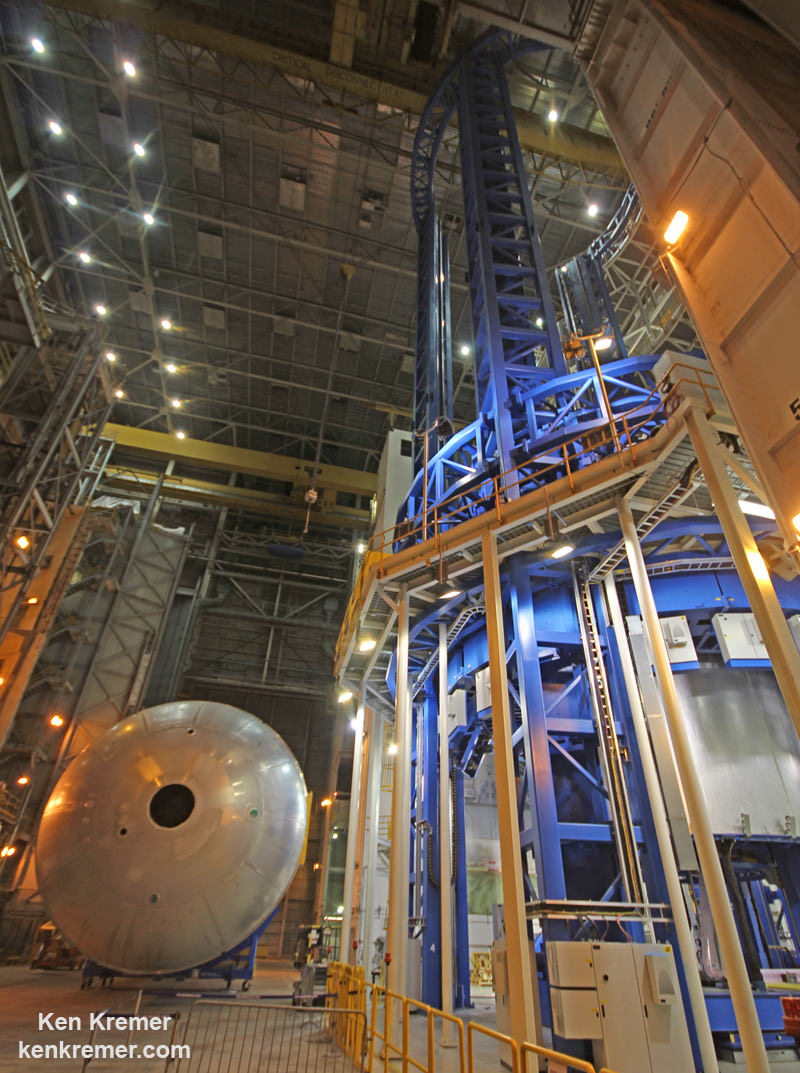
So for 2017 what are the major milestone you hope to complete here at KSC for SLS and Orion?
“So for me here at the Kennedy Space Center, my goal for the end of this calendar year 2017 we will have completed all of the construction of all of the [ground systems] hardware and facilities that are necessary to process and launch the Space Launch System (SLS) and Orion,” Cabana elaborated.
‘We will still have a lot of work to do with the software for the spacecraft command and control systems and the ground systems.”
“But my goal is to have the hardware for the ground systems complete by the end of this year.”
What are those KSC facilities?
“Those facilities include the VAB [Vehicle Assembly Building] which will be complete to accept the mobile launcher in September and pad 39B will be complete in August,” Cabana said.
“The RPSF is already complete. The NPFF is already complete and we are doing testing in there. The LASF [Launch Abort System Facility] is complete – where they put the abort rocket on.”
“The Mobile Launcher will be complete from a structural point of view, with all the systems installed by the end of the year [including the umbilical’s and while room].”
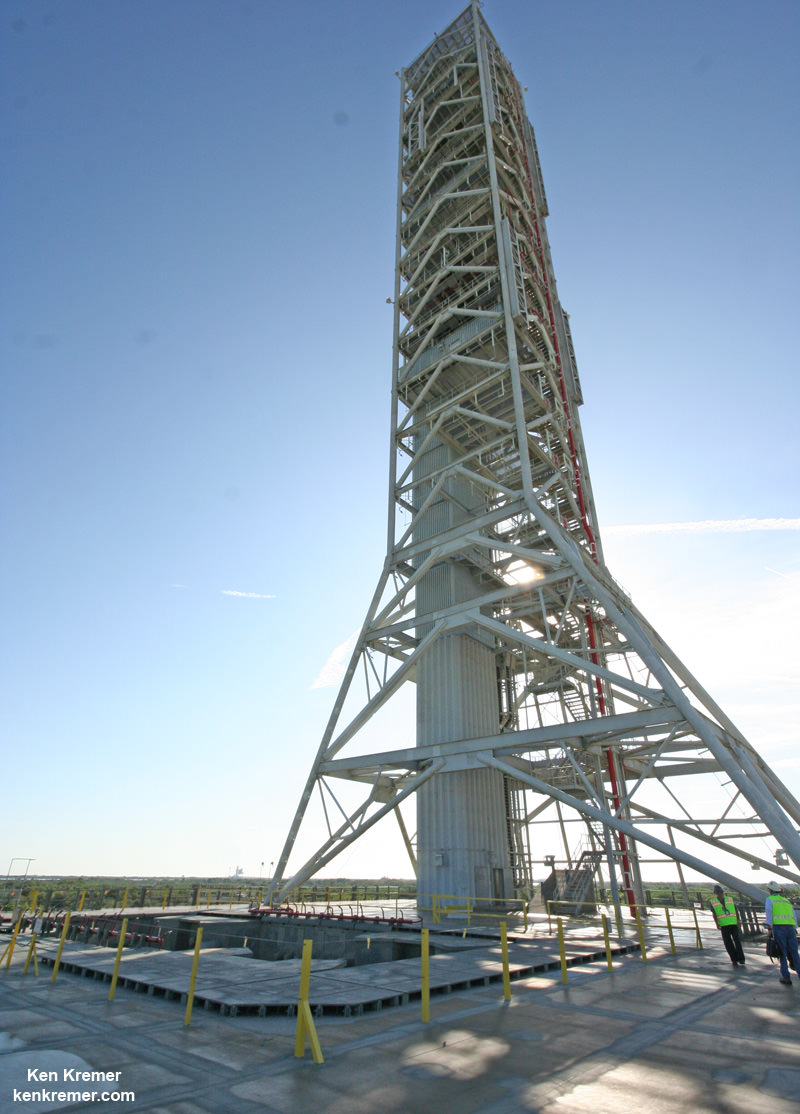
Watch for Ken’s onsite CRS-11 mission reports direct from the Kennedy Space Center and Cape Canaveral Air Force Station, Florida.
Stay tuned here for Ken’s continuing Earth and Planetary science and human spaceflight news.
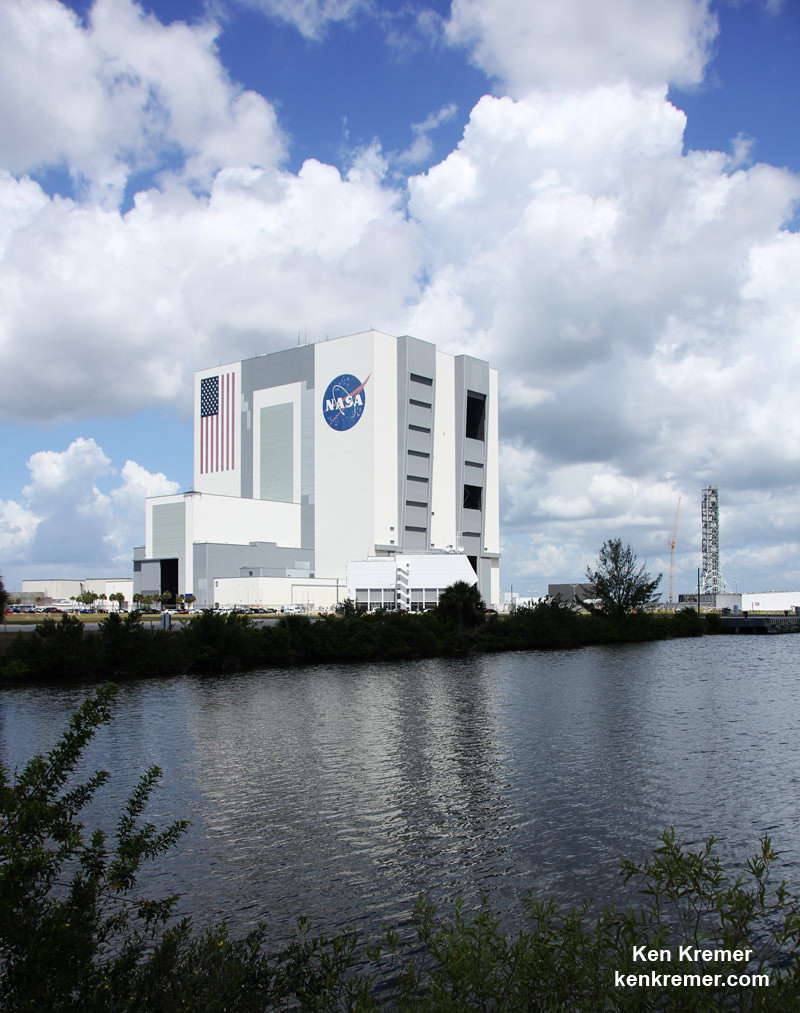
.……….
Learn more about the SpaceX Dragon CRS-11 resupply launch to ISS, NASA missions and more at Ken’s upcoming outreach events at Kennedy Space Center Quality Inn, Titusville, FL:
May 30/31: “SpaceX CRS-11 and CRS-10 resupply launches to the ISS, Inmarsat 5 and NRO Spysat, EchoStar 23, SLS, Orion, Commercial crew capsules from Boeing and SpaceX , Heroes and Legends at KSCVC, ULA Atlas/John Glenn Cygnus launch to ISS, SBIRS GEO 3 launch, GOES-R weather satellite launch, OSIRIS-Rex, Juno at Jupiter, InSight Mars lander, SpaceX and Orbital ATK cargo missions to the ISS, ULA Delta 4 Heavy spy satellite, Curiosity explores Mars, Pluto and more,” Kennedy Space Center Quality Inn, Titusville, FL, evenings

Trump Proposes $19.1 Billion 2018 NASA Budget, Cuts Earth Science and Education
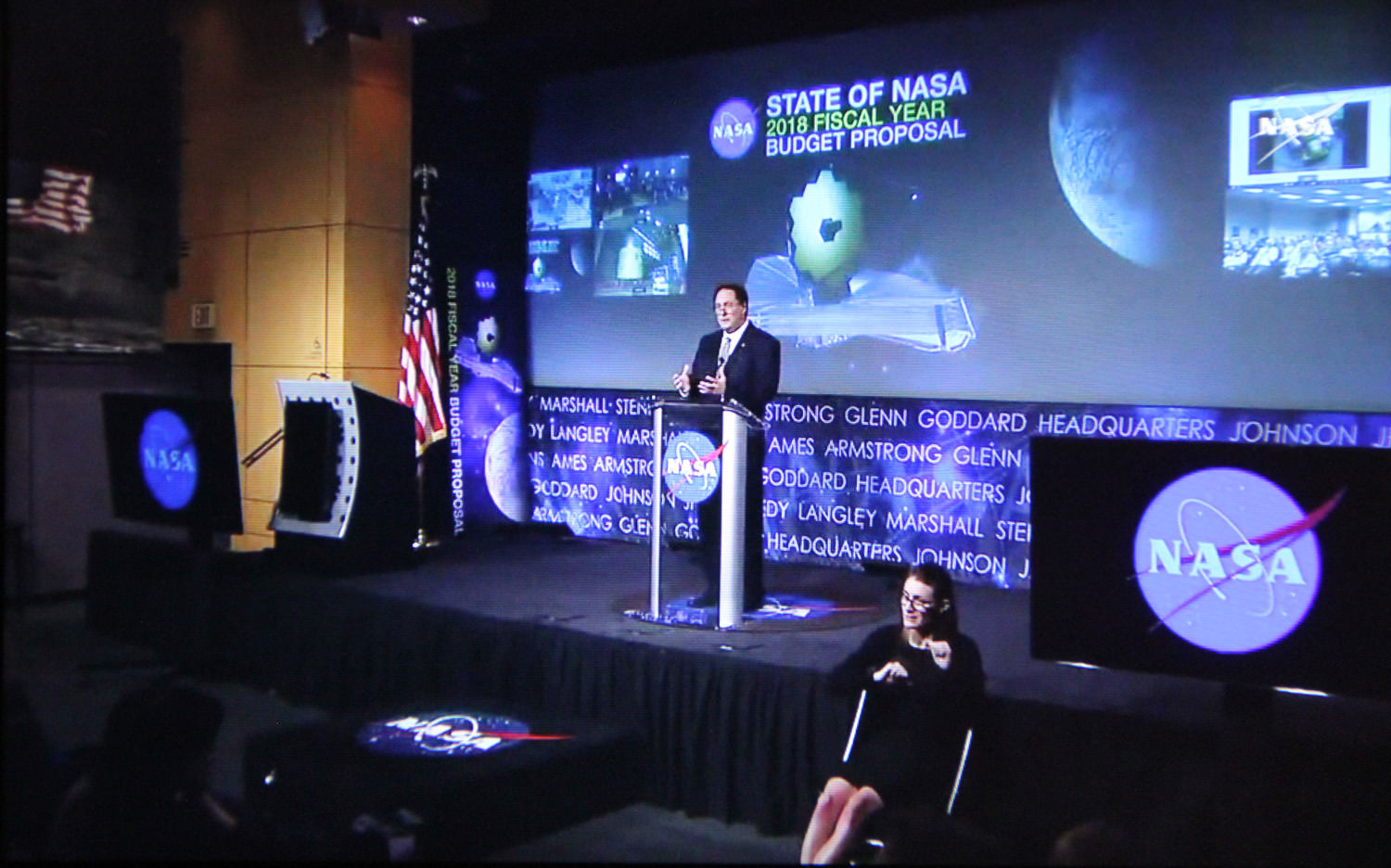

The Trump Administration has proposed a $19.1 Billion NASA budget request for Fiscal Year 2018, which amounts to a $0.5 Billion reduction compared to the recently enacted FY 2017 NASA Budget. Although it maintains many programs such as human spaceflight, planetary science and the Webb telescope, the budget also specifies significant cuts and terminations to NASA’s Earth Science and manned Asteroid redirect mission as well as the complete elimination of the Education Office.
Overall NASA’s FY 2018 budget is cut approximately 3%, or $560 million, for the upcoming fiscal year starting in October 2017 as part of the Trump Administration’s US Federal Budget proposal rolled out on May 23, and quite similar to the initial outline released in March.
The cuts to NASA are smaller compared to other Federal science agencies also absolutely vital to the health of US scientific research – such as the NIH, the NSF, the EPA, DOE and NIST which suffer unconscionable double digit slashes of 10 to 20% or more.
The highlights of NASA’s FY 2018 Budget were announced by NASA acting administrator Robert Lightfoot during a ‘State of NASA’ speech to agency employees held at NASA HQ, Washington, D.C. and broadcast to the public live on NASA TV.
Lightfoot’s message to NASA and space enthusiasts was upbeat overall.
“What this budget tells us to do is to keep going!” NASA acting administrator Robert Lightfoot said.
“Keep doing what we’ve been doing. It’s very important for us to maintain that course and move forward as an agency with all the great things we’re doing.”
“I want to reiterate how proud I am of all of you for your hard work – which is making a real difference around the world. NASA is leading the world in space exploration, and that is only possible through all of your efforts, every day.”
“We’re pleased by our top line number of $19.1 billion, which reflects the President’s confidence in our direction and the importance of everything we’ve been achieving.”
Lightfoot recalled the recent White House phone call from President Trump to NASA astronaut & ISS Station Commander Peggy Whitson marking her record breaking flight for the longest cumulative time in space by an American astronaut.
Thus Lightfoot’s vision for NASA has three great purposes – Discover, Explore, and Develop.
“NASA has a historic and enduring purpose. It can be summarized in three major strategic thrusts: Discover, Explore, and Develop. These correspond to our missions of scientific discovery, missions of exploration, and missions of new technology development in aeronautics and space systems.”
Lightfoot further recounted the outstanding scientific accomplishments of NASA’s Mars rover and orbiters paving the path for the agencies plans to send humans on a ‘Journey to Mars’ in the 2030s.
“We’ve had a horizon goal for some time now of reaching Mars, and this budget sustains that work and also provides the resources to keep exploring our solar system and look beyond it.”
Lightfoot also pointed to upcoming near term science missions- highlighting a pair of Mars landers – InSIGHT launching next year as well as the Mars 2020 rover. Also NASA’s next great astronomical observatory – the James Webb Space Telescope (JWST).
“In science, this budget supports approximately 100 missions: 40 missions currently preparing for launch & 60 operating missions.”
“The James Webb Space Telescope is built!” Lightfoot gleefully announced.
“It’s done testing at Goddard and now has moved to Johnson for tests to simulate the vacuum of space.”
JWST is the scientific successor to the Hubble Space Telescope and slated for launch in Oct. 2018. The budget maintains steady support for Webb.
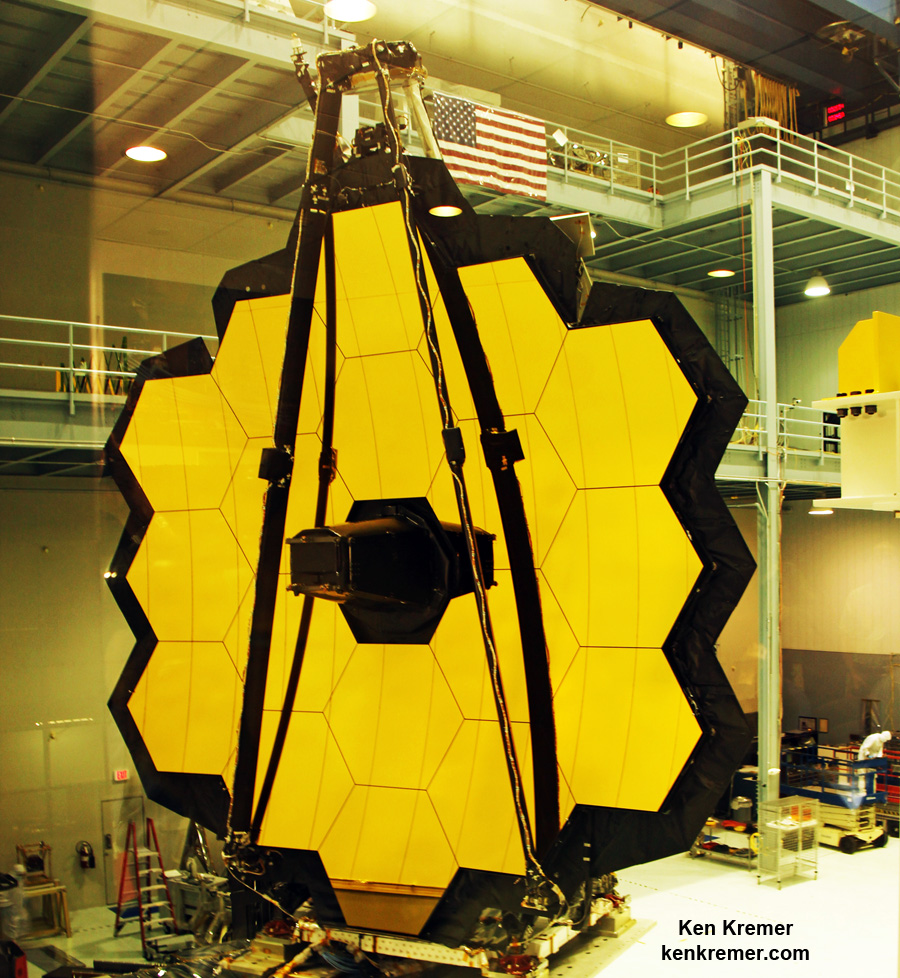
The Planetary Sciences division receives excellent support with a $1.9 Billion budget request. It includes solid support for the two flagship missions – Mars 2020 and Europa Clipper as well as the two new Discovery class missions selected -Lucy and Psyche.
“The budget keeps us on track for the next selection for the New Frontiers program, and includes formulation of a mission to Jupiter’s moon Europa.”
“SLS and Orion are making great progress. They are far beyond concepts, and as I mentioned, components are being tested in multiple ways right now as we move toward the first flight of that integrated system.”
NASA is currently targeting the first integrated launch of SLS and Orion on the uncrewed Exploration Mission-1 (EM-1) for sometime in 2019.
Top NASA managers recently decided against adding a crew of two astronauts to the flight after conducting detailed agency wide studies at the request of the Trump Administration.
NASA would have needed an additional $600 to $900 to upgrade EM-1 with humans.
Unfortunately Trump’s FY 2018 NASA budget calls for a slight reduction in development funding for both SLS and Orion – thus making a crewed EM-1 flight fiscally unviable.

The budget request does maintain full funding for both of NASA’s commercial crew vehicles planned to restore launching astronauts to low Earth orbit (LEO) and the ISS from US soil on US rockets – namely the crewed Dragon and CST-100 Starliner – currently under development by SpaceX and Boeing – thus ending our sole reliance on Russian Soyuz for manned launches.
“Working with commercial partners, NASA will fly astronauts from American soil on the first new crew transportation systems in a generation in the next couple of years.”
“We need commercial partners to succeed in low-Earth orbit, and we also need the SLS and Orion to take us deeper into space than ever before.”
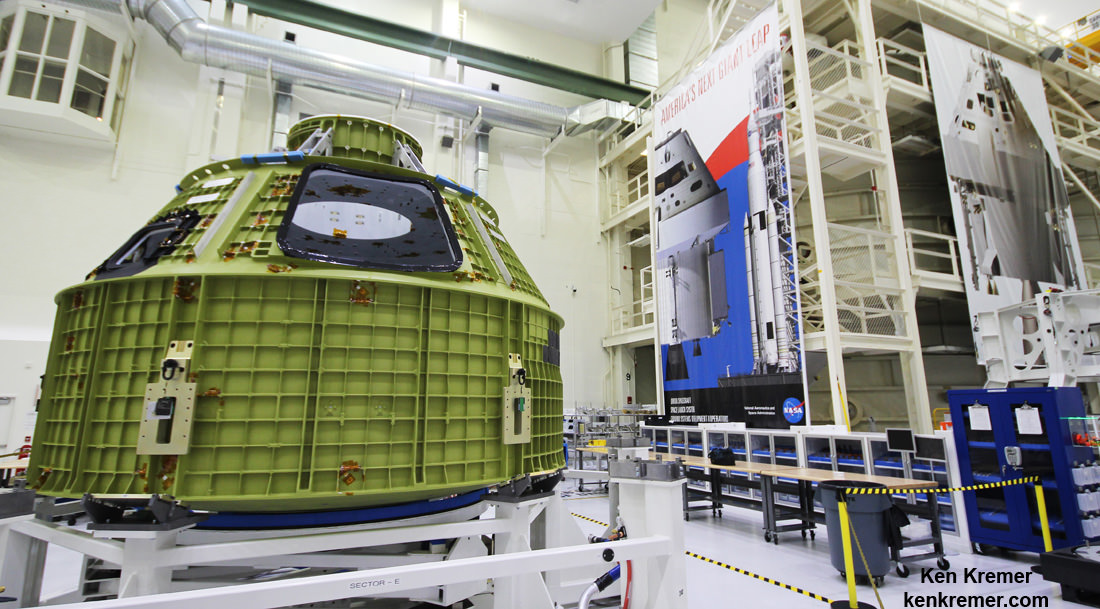
However the Trump Administration has terminated NASA’s somewhat controversial plans for the Asteroid Redirect Mission (ARM) – initiated under the Obama Administration – to robotically retrieve a near Earth asteroid and redirect it to lunar orbit for a visit by a crewed Orion to gather unique asteroidal samples.
“While we are ending formulation of a mission to an asteroid, known as the Asteroid Redirect Mission, many of the central technologies in development for that mission will continue, as they constitute vital capabilities needed for future human deep space missions.”
Key among those vital capabilities to be retained and funded going forward is Solar Electric Propulsion (SEP).
“Solar electric propulsion (SEP) for our deep space missions is moving ahead as a key lynchpin.”
The Trump Administration’s well known dislike for Earth science and disdain of climate change has manifested itself in the form of the termination of 5 current and upcoming science missions.
NASA’s FY 2018 Earth Science budget suffers a $171 million cut to $1.8 Billion.
“While we are not proposing to move forward with Orbiting Carbon Observatory-3 (OCO-3), Plankton, Aerosol, Cloud, ocean Ecosystem (PACE), Climate Absolute Radiance and Refractivity Observatory Pathfinder (CLARREO PF), and the Radiation Budget Instrument (RBI), this budget still includes significant Earth Science efforts, including 18 Earth observing missions in space as well as airborne missions.”
The DSCOVR Earth-viewing instruments will also be shut down.
NASA’s Office of Education will also be terminated completely under the proposed FY 2018 budget and the $115 million of funding excised.
“While this budget no longer supports the formal Office of Education, NASA will continue to inspire the next generation through its missions and the many ways that our work excites and encourages discovery by learners and educators. Let me tell you, we are as committed to inspiring the next generation as ever.”
Congress will now have its say and a number of Senators, including Republicans says Trumps budget is DOA.
Stay tuned here for Ken’s continuing Earth and Planetary science and human spaceflight news.
Obama Administration Proposes $18.5 Billion Budget for NASA – Bolden

The Obama Administration today (Feb. 2) proposed a NASA budget allocation of $18.5 Billion for the new Fiscal Year 2016, which amounts to a half-billion dollar increase over the enacted budget for FY 2015, and keeps the key manned capsule and heavy lift rocket programs on track to launch humans to deep space in the next decade and significantly supplements the commercial crew initiative to send our astronauts to low Earth orbit and the space station later this decade.
NASA Administrator Charles Bolden formally announced the rollout of NASA’s FY 2016 budget request today during a “state of the agency” address at the Kennedy Space Center (KSC), back dropped by the three vehicles at the core of the agency’s human spaceflight exploration strategy; Orion, the Boeing CST-100 and the SpaceX Dragon.
“To further advance these plans and keep on moving forward on our journey to Mars, President Obama today is proposing an FY 2016 budget of $18.5 billion for NASA, building on the significant investments the administration has made in America’s space program over the past six years,” Administrator Bolden said to NASA workers and the media gathered at the KSC facility where Orion is being manufactured.
“These vehicles are not things just on paper anymore! This is tangible evidence of what you [NASA] have been doing these past few years.”
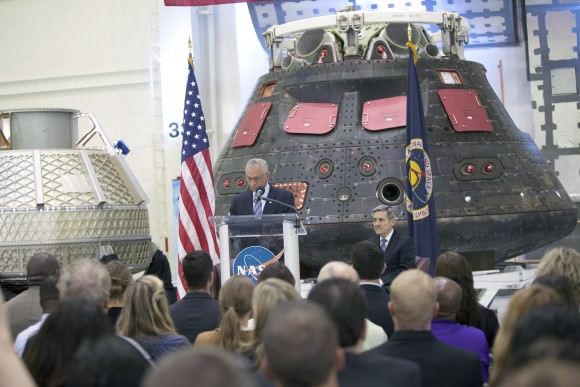
Bolden said the $18.5 Billion budget request will enable the continuation of core elements of NASA’s main programs including first launch of the new commercial crew vehicles to orbit in 2017, maintaining the Orion capsule and the Space Launch System (SLS) rocket to further NASA’s initiative to send ‘Humans to Mars’ in the 2030s, extending the International Space Station (ISS) into the next decade, and launching the James Webb Space Telescope in 2018. JWST is the long awaited successor to NASA’s Hubble Space Telescope.
“NASA is firmly on a journey to Mars. Make no mistake, this journey will help guide and define our generation.”
Funding is also provided to enable the manned Asteroid Redirect Mission (ARM) by around 2025, to continue development of the next Mars rover, and to continue formulation studies of a robotic mission to Jupiter’s icy moon Europa.
“That’s a half billion-dollar increase over last year’s enacted budget, and it is a clear vote of confidence in you – the employees of NASA – and the ambitious exploration program you are executing,” said Bolden.
Overall the additional $500 million for FY 2016 translates to a 2.7% increase over FY 2015. That compares to about a 6.4% proposed boost for the overall US Federal Budget amounting to $4 Trillion.
The Boeing CST-100 and the SpaceX Dragon V2 will restore the US capability to ferry astronauts to and from the International Space Station (ISS).
In September 2014, Bolden announced the selections of Boeing and SpaceX to continue development and certification of their proposed spaceships under NASA’s Commercial Crew Program (CCP) and Launch America initiative started back in 2010.
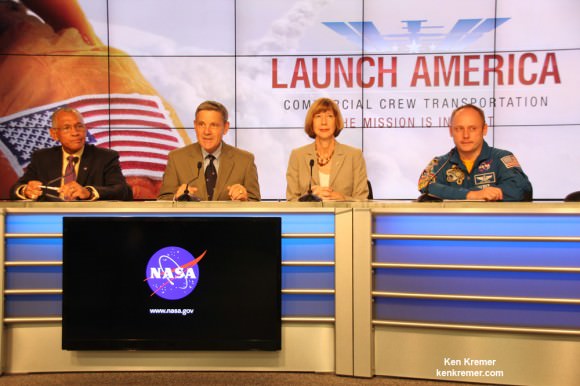
Since the retirement of the Space Shuttle program in 2011, all NASA astronauts have been totally dependent on Russia and their Soyuz capsule as the sole source provider for seats to the ISS.
“The commercial crew vehicles are absolutely critical to our journey to Mars, absolutely critical. SpaceX and Boeing have set up operations here on the Space Coast, bringing jobs, energy and excitement about the future with them. They will increase crew safety and drive down costs.”
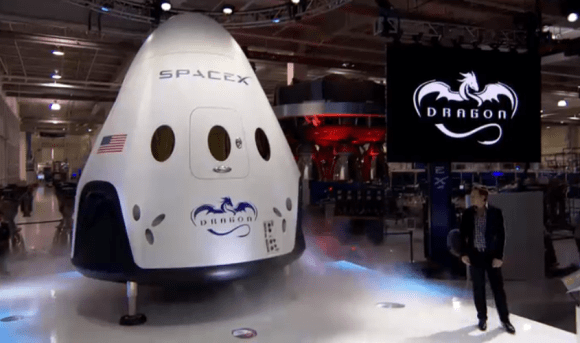
CCP gets a hefty and needed increase from $805 Million in FY 2015 to $1.244 Billion in FY 2016.
To date the Congress has not fully funded the Administration’s CCP funding requests, since its inception in 2010.
The significant budget slashes amounting to 50% or more by Congress, have forced NASA to delay the first commercial crew flights of the private ‘space taxis’ from 2015 to 2017.
As a result, NASA has also been forced to continue paying the Russians for crew flights aboard the Soyuz that now cost over $70 million each under the latest contract signed with Roscosmos, the Russian Federal Space Agency.
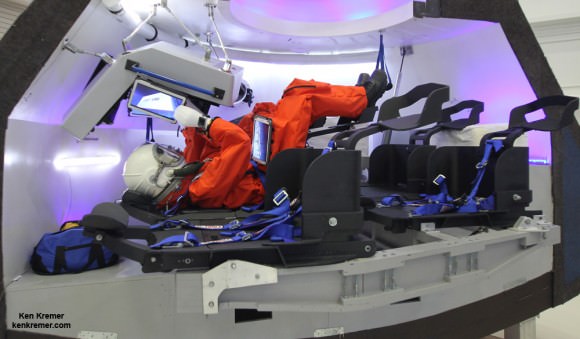
Bolden has repeatedly stated that NASA’s overriding goal is to send astronauts to Mars in the 2030s.
To accomplish the ‘Journey to Mars’ NASA is developing the Orion deep space crew capsule and mammoth SLS rocket.
However, both programs had their budgets cut in the FY 2016 proposal compared to FY 2015. The 2015 combined total of $3.245 Billion is reduced in 2016 to $2.863 Billion, or over 10%.
The first test flight of an unmanned Orion atop the SLS is now slated for liftoff on Nov. 2018, following NASA’s announcement of a launch delay from the prior target of December 2017.
Since the Journey to Mars goal is already underfunded, significant cuts will hinder progress.
Orion just completed its nearly flawless maiden unmanned test flight in December 2014 on the Exploration Flight Test-1 (EFT-1) mission.

There are some losers in the new budget as well.
Rather incomprehensibly funding for the long lived Opportunity Mars Exploration Rover is zeroed out in 2016.
This comes despite the fact that the renowned robot just reached the summit of a Martian mountain at Cape Tribulation and is now less than 200 meters from a science goldmine of water altered minerals.

Funding for the Lunar Reconnaissance Orbiter (LRO) is also zeroed out in FY 2016.
Both missions continue to function quite well with very valuable science returns. They were also zeroed out in FY 2015 but received continued funding after a senior level science review.
So their ultimate fate is unknown at this time.
Overall, Bolden was very upbeat about NASA’s future.
“I can unequivocally say that the state of NASA is strong,” Bolden said.
He concluded his remarks saying:
“Because of the dedication and determination of each and every one of you in our NASA Family, America’s space program is not just alive, it is thriving! Together with our commercial and international partners, academia and entrepreneurs, we’re launching the future. With the continued support of the Administration, the Congress and the American people, we’ll all get there together.”
Stay tuned here for Ken’s continuing Earth and planetary science and human spaceflight news.
Weekly Space Hangout – March 7, 2014: Cosmos Premiere & NASA Budget
Host: Fraser Cain
Astrojournalists: David Dickinson, Matthew Francis, Casey Dreier, Jason Major, Brian Koberlein, Alan Boyle
This week’s stories:
Alan Boyle (@b0yle, cosmiclog.com ):
Cosmos premiere!
David Andrew Dickinson (@astroguyz):
Watch the Close Pass of NEO 2014 DX110
Daylight Saving time: A Spring Forward or a Step Back?
A Natural Planetary Defense Against Solar Storms
Matthew Francis (@DrMRFrancis, BowlerHatScience.org):
Using gravitational lensing to measure a spinning quasar
CosmoAcademy classes
Casey Dreier (Planetary.org):
The 2015 NASA Budget Request
NASA Kinda Embraces Exploring Europa
Jason Major (@JPMajor, LightsInTheDark.com):
That’s the way the asteroid crumbles
Brian Koberlein (@briankoberlein, briankoberlein.com):
*Possible* evidence for dark matter WIMPs
Black Holes exceed Eddington limit
Using quasars in a quantum experiment
We record the Weekly Space Hangout every Friday at 12:00 pm Pacific / 3:00 pm Eastern. You can watch us live on Google+, Universe Today, or the Universe Today YouTube page.
Enduring Quests and Daring Visions: NASA Lays Out a Roadmap for Astrophysics
Three decades ago we were unaware that exoplanets circled other stars. We had just started talking about dark matter but remained blissfully ignorant of dark energy. The Hubble Space Telescope was still on the drawing board and our understanding of the life cycle of stars, the evolution of galaxies, and the history of the Universe was shaky.
But over the past three decades we have discovered thousands of exoplanets around other stars. We have mapped the life cycle of stars from their formation in beautiful stellar nurseries to their sometimes explosive deaths. We have seen deep into the history of the Universe allowing us to paint a picture of galaxies growing from mere shreds to the incredible spiral structures we see today. We now believe dark matter dominates the underlying framework of the Universe, while dark energy drives its accelerating expansion.
The amount of growth over the past three decades has been dramatic. To better access what the next three decades will bring, NASA has laid out a roadmap — a long-term vision for future missions — necessary to advance our understanding of the Universe.
In March 2013, the NASA Advisory Council/Science Committee assembled a group of astronomers who would determine the goals and aims of NASA for the next 30 years. The final product is this so-called roadmap officially titled “Enduring Quests Daring Visions — NASA Astrophysics in the Next Three Decades.”
The roadmap first notes three defining questions NASA should continue to pursue:
— Are we alone?
— How did we get here?
— How does the Universe work?
“Seeking answers to these age-old questions are enduring quests of humankind,” the roadmap states. “The coming decades will see giant strides forward in finding earthlike habitable worlds, in understanding the history of star and galaxy formation and evolution, and in teasing out the fundamental physics of the cosmos.”
In order to better address these questions, the roadmap defines three broad categories of time: the Near-Term Era, defined by missions that are currently flying or planned for this coming decade, the Formative Era, defined by missions that are designed and built in the 2020s, and the Visionary Era, defined by advanced missions for the 2030s and beyond.
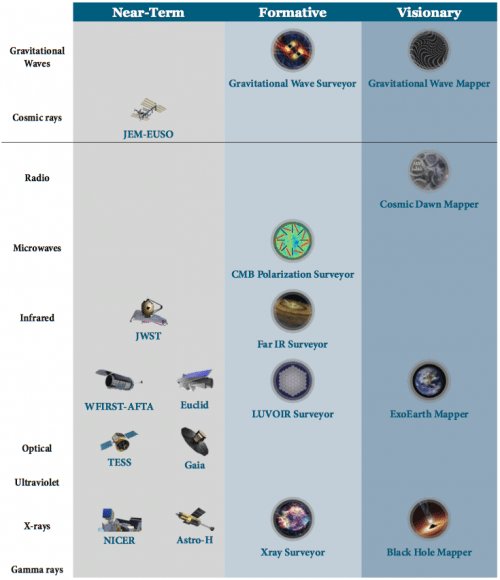
Are we alone?
The Near-Term Era’s goal is to develop a comprehensive understanding of the demographics of planetary systems. The Kepler mission has already supplied a plethora of information on hot planets orbiting close to their parent stars. The WFIRST-AFTA mission — a wide-field infrared survey planned to launch in 2024 — will compliment this by supplying information on cold and free-floating planets.
The Formative Era’s goal is to characterize the surfaces and atmospheres of nearby stars. This will allow us to move beyond characterizing planets as Earth-like in mass and radius to truly being Earth-like in planetary and atmospheric composition. A proposed mission that allows a large star-planet contrast will directly measure oxygen, water vapor, and other molecules in the atmospheres of Earth-like exoplanets.
The Visionary Era’s goal is to produce the first resolved images of Earth-like planets around other stars. The roadmap team hopes to identify continents and oceans on distant worlds using optical telescopes orbiting hundreds of kilometers apart.
How did we get here?
The Near-Term Era will use the James Webb Space Telescope to supply unprecedented views of protostars and star clusters. It will resolve nearby stellar nurseries and take a closer look at the earliest galaxies.
The Formative Era will trace the origins of planets, stars and galaxies across a spectrum of wavelengths. An infrared surveyor will resolve protoplanetary disks while an X-ray surveyor will observe supernova remnants and trace how these incredible explosions affected the evolution of galaxies. Gravitational wave detectors will untangle the complicated dance between galaxies and the supermassive black holes at their centers.
The Visionary Era will peer nearly 14 billion years into the past when ultraviolet photons from the first generation of stars and black holes flooded spaced with enough energy to free electrons. The James Webb Space Telescope will provide an extraordinary means to better view this threshold.
How does the Universe work?
The Universe is full of extremes. Conditions created in the first nanoseconds of cosmic time and near the event horizons of black holes cannot be recreated in the lab. But the Near-Term and Formative Era’s goals will be to measure the cosmos with such precision that scientists can probe the underlying physics of cosmic inflation and determine the exact mechanisms driving today’s accelerating expansion.
The Visionary Era may use gravitational wave detectors to detect space-time ripples produced during the early stages of the Universe or map the shadow cast by a black hole’s event horizon.
The past 30 years have shown a dramatic growth in knowledge with unimaginable turns. Even with such a detailed framework laid out for the next 30 years, it’s likely that many missions are currently beyond the edge of the present imagination. The most exciting results will be drawn from the questions we haven’t even thought to ask yet.
And as with any of the recent “roadmaps” that the various divisions throughout NASA have presented, the biggest question will be if the funding will be available to make these missions a reality.
Again, this 110-page read may be found here.
The roadmap team consists of Chryssa Kouveliotou (NASA/MSFC), Eric Agol (University of Washington), Natalie Batalha (NASA/Ames), Jacob Bean (University of Chicago), Misty Bentz (Georgia State University), Neil Cornish (Montana State University), Alan Dressler (The Observatories of the Carnegie Institution for Science), Scott Gaudi (Ohio State University), Olivier Guyon (University of Arizona/Subaru Telescope), Dieter Hartmann (Clemson University), Enectali Figueroa-Feliciano (MIT), Jason Kalirai (STScI/Johns Hopkins University), Michael Niemack (Cornell University), Feryal Ozel (University of Arizona), Christopher Reynolds (University of Maryland), Aki Roberge (NASA/GSFC), Kartik Sheth (National Radio Astronomy Observatory/University of Virginia), Amber Straughn (NASA/GSFC), David Weinberg (Ohio State University), Jonas Zmuidzinas (Caltech/JPL), Brad Peterson (Ohio State University) and Joan Centrella (NASA Headquarters).
How NASA Can be Innovative on Reduced Budgets
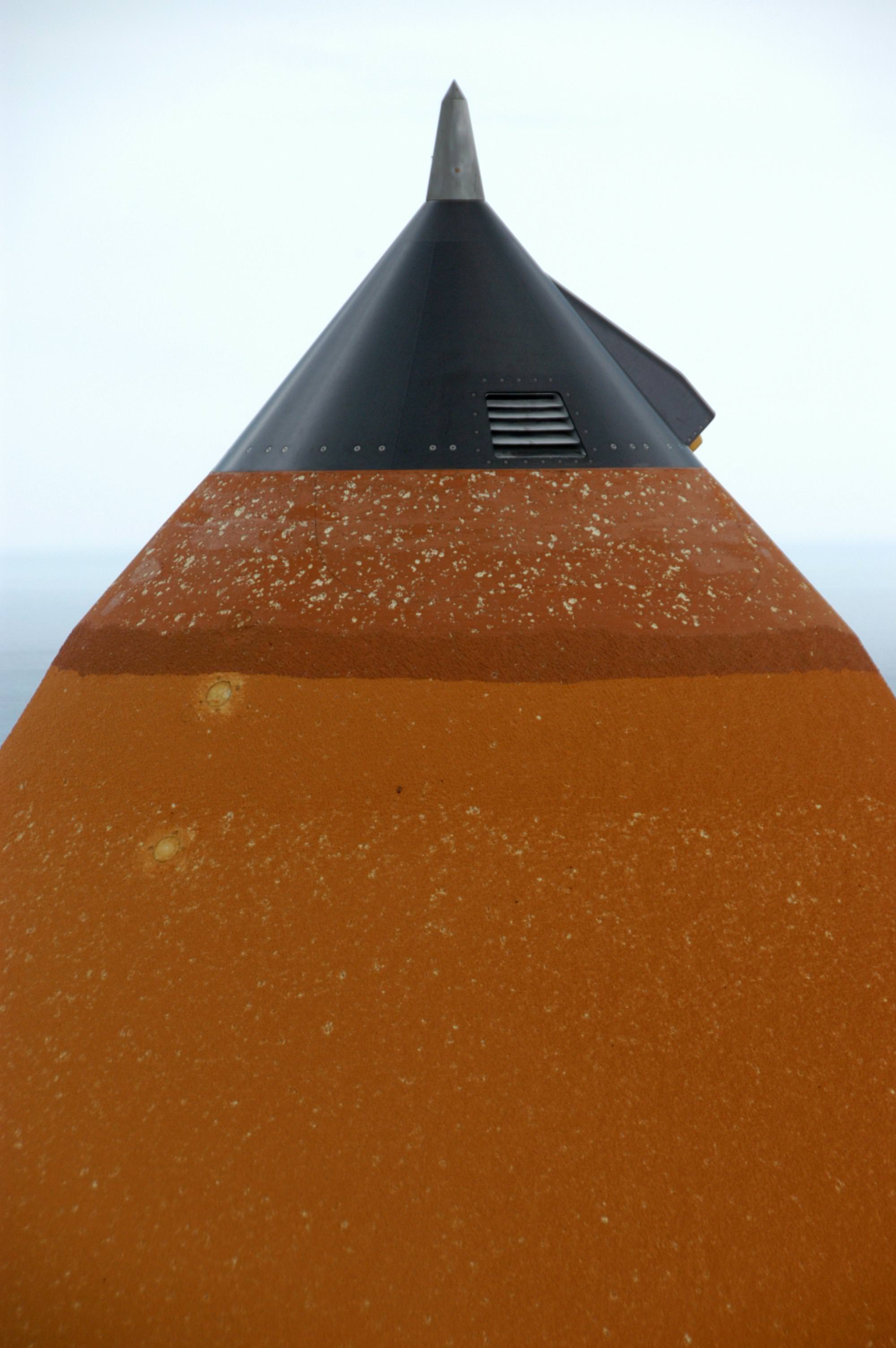
OTTAWA, CANADA — With 6,000 hailstorm divots scarring a space shuttle external tank, and no backup immediately available to fly, NASA found itself with a problem in February 2007.
The STS-117 mission was supposed to carry solar panels and connecting trusses up to the station, so changing the shuttle rotation would affect construction. What to do?
“I’ve got this tank that takes us a bit over two years to manufacture, and essentially it looks like your car here that was peppered by a hailstorm, and what are we going to do?” said Bill Gerstenmaier, NASA’s associate administrator of the human exploration and operations directorate, speaking today (Nov. 14) at the Canadian Space Society’s annual summit in Ottawa, Canada.
“Mike Griffin was the administrator at the time. He said, ‘Get rid of that tank and put another one out there,’ and we didn’t have another one.”
To respond to the problem — based mostly on the word of two technicians who felt repairs were possible, Gerstenmaier said — NASA set out to fix the problem. Communications flew between the launch site in Florida and the manufacturer in New Orleans. NASA had a program that kept track of tiles on the shuttle, and modified it to take care of the dings. The mission lifted off successfully, using the repaired tank, in June 2007 — three months after the incident.
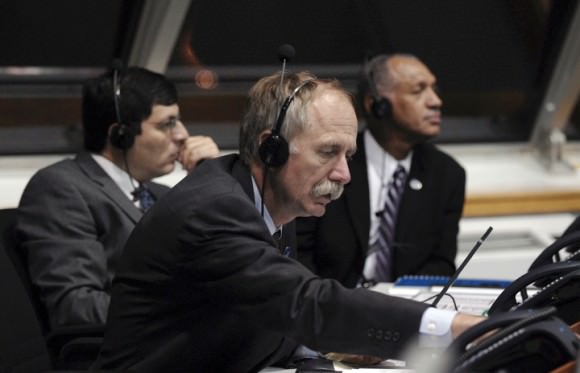
Gerstenmaier said this demonstrates that it’s possible to be innovative on reduced budgets, and drew parallels to what NASA is facing right now as it fights through fiscal 2014 budget discussions.
“We have to turn them not into a ‘woe is me’ kind of discussion, but rise above that and pull out the innovation, and that’s what we’re doing in this budget,” he said.
Reduced budgets have helped NASA make use of reduced resources before, he added. It encouraged the agency to tender out to commercial companies (such as SpaceX) for cargo flights to the space station, even though development would occur on the fly. Gerstenmaier, however, did not address concerns that the new budget could cut back commercial crew budgets even further.
Another example of past innovation by both NASA and the Canadian Space Agency, Gerstenmaier said, occurred when the space station’s Canadarm2 robotic arm was adapted to capture these commercial cargo vehicles and berth them into station. If the Canadians had been told in the 1990s — when the space station was just beginning — that the arm would have been required to do this, they likely would have balked, Gerstenmaier said.
While only touching lightly on the ongoing budget discussions, Gerstenmaier did say NASA is keeping an eye on the efforts of Canadian astronaut Chris Hadfield and others as it continues to develop outreach. He joked that the movie “Gravity” really showed the divide between space fans and the general public.
“We see it one way and [say] that isn’t physically correct … it doesn’t actually look like that in space. This is wrong,” he said. “Then the general public says ‘this is really stressful, she lost her child,’ — they’re in this other mode. We’re sitting next to each other in the theater. My non-space colleague is crying, and I’m saying this violates the law of physics.”
Some of Gerstenmaier’s past work in NASA includes top managerial positions in the shuttle//Mir program, space shuttle program integration, the International Space Station and NASA’s space operations directorate (where he oversaw the final 21 space shuttle missions.)



